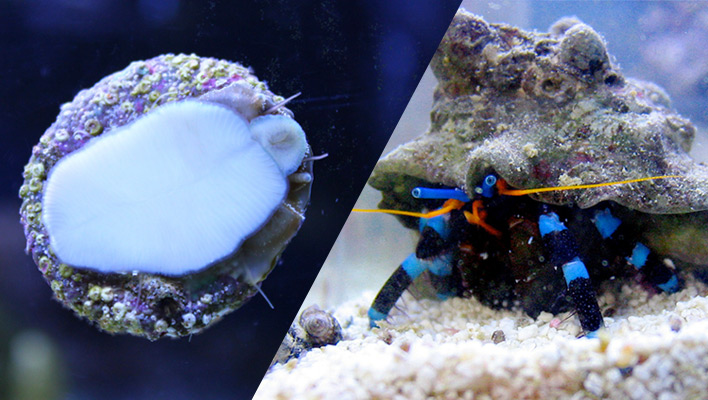As mentioned in last week’s article algae and how to manage it is still the biggest problem/concern of many hobbyists both new and old. I would love to say that if everything is kept in balance and nutrients are kept low there will never be an issue, but that is not true.
There are tanks with everything in balance where algae problems creep up for seemingly no reason and there are tanks with things out of whack that are completely algae-free. So as mentioned managing algae is not a simple or for that matter completely understood aspect of reefkeeping.
Having said this I have found that having natural consumers of algae in a tank can go a long way in keeping it in check. These animals have become so prominent in the hobby that they have even developed their own name for the group: the so-called cleanup crew. While algae is the main reason they are kept, many also help in cleaning up the detritus and other waste that can accumulate in a tank.
Initially when I looked at this group of animals my thinking was that I just needed the animals that ate algae, but over time I have come to appreciate that they can do a lot more than that. In fact, I have come to realize that in order for these animals to be as efficient as they can be it actually requires having groupings of these animals to clean up different areas of the tank.
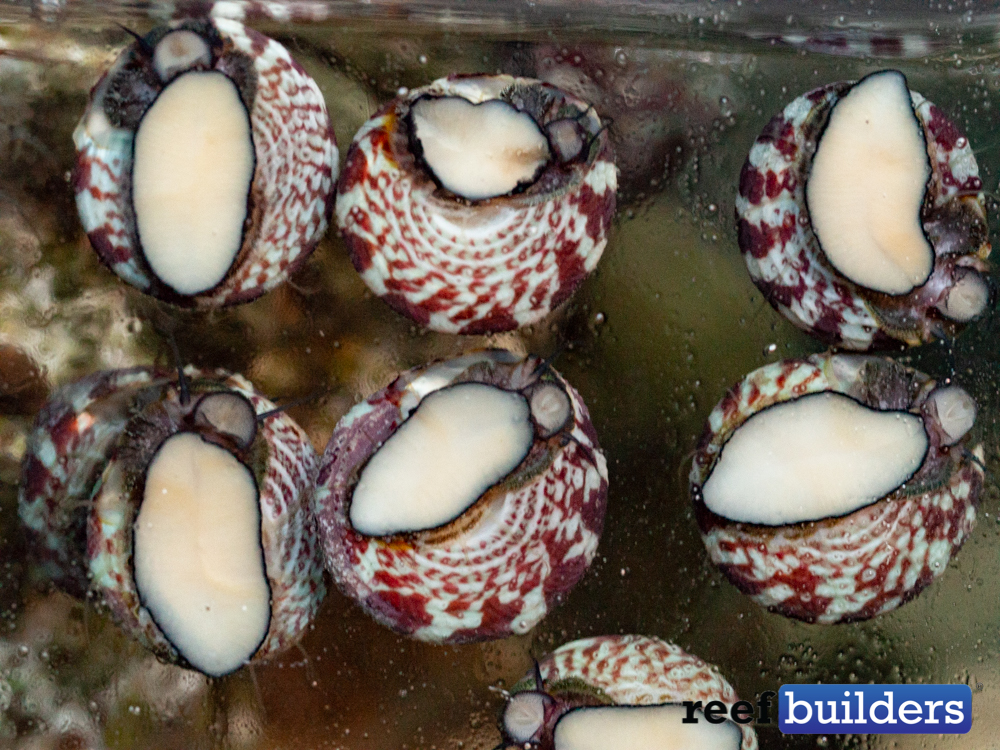
All working together
There are animals that do their best work on the live rock and around the corals, another group that helps clean the glass, and yet another group to keep the substrate clean. It was also my initial misunderstanding that the only animals required were snails. I have since come to understand that a wide variety of animals including fish and microfauna all work in concert to help keep a reef tank clean. While there is some overlap between some of these animals, most perform a specific task in helping to keep a tank clean or more specifically help to keep algae in check.
The typical animals in a cleanup crew are snails (Trochus, Astrea, Nassarius, etc, Echinoderms (urchins, starfish, etc), and decapods such as small crabs and shrimp. While these are the standard members of a “cleanup crew”, from my point of view adding some fish such as Tangs and Rabbitfish as well as microfauna such as amphipods, copepods, and even some worms helps to complete the ensemble. Each of these animals performs a task in keeping a reef tank clean and each of their attributes will be discussed below.
When thinking about why a cleanup crew should be added the first reason that usually comes to mind is to control algae and for this, snails are the animals that come to mind. There is now a wide variety of snails available and while they all eat algae there are some differences between them. The first of these and the most widely available are the Astreae snails, which are often referred to as Astrea or turbo snails.
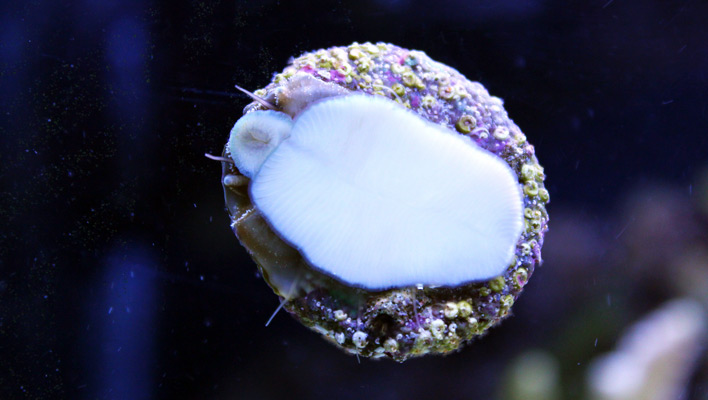
These medium-sized snails are usually the size of a nickel but can grow as large as a quarter. These are the most commonly used snails as they come out of the Caribbean and are useful as they consume some fine hair algae, algae film that grows on the glass and rocks as well as some types of cyano. They are not the hardiest of creatures because if they tip over they cannot right themselves so unless they are turned by an outside source they will perish.
Because of this inability to right themselves when they are flipped, they often become prey to hawkfish, triggerfish, and some wrasses. So if these fish are present their population can fall quickly.
Turbo snails
Another popular snail is the Turbo snail, which can grow to the size of a golf ball. These snails consume a wide variety of algae including hair, film, turf, and even some macroalgae like Caulerpa. Their only shortcoming is that due to their large size and their capacity to act like mini bulldozers, they can knock over any corals that are not firmly attached. These snails are fairly hardy and consume a large amount of algae daily. If an adequate supply of algae is not present they should be fed Caulerpa or Nori.
A much sought-after snail for a cleanup crew is the Margarita snail. This small turban-shaped snail stays relatively small in size at about 1 inch, but despite its small size, is a voracious algae eater and moves very fast for a snail. It consumes a wide variety of algae including almost all of the nuisance hair and turf varieties and for these reasons, it is one of the more desired members of the clean-up crew.
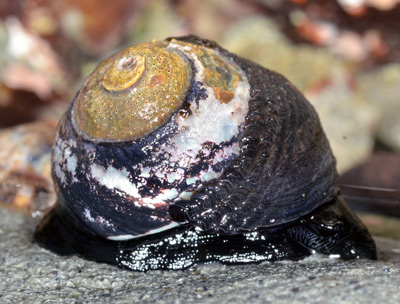
The last two snail members of the cleanup crew are Cerith and Nassarius snails. These snails are useful for keeping the sandbed clean as they are both not only algae eaters, but also constantly work the sand keeping it clean not only of algae but also detritus, fish waste, and anything dead that falls into the substrate.
These mollusks like to burrow in the sand during the day and come out at night to feed. Since you will not notice them during the day, you may think that they are not doing anything, but if you can observe the tank at night under a red light you will see how they meticulously go over and through the sand consuming anything edible they come across. If you wish to keep your sand clean these are some of the best animals for that task.
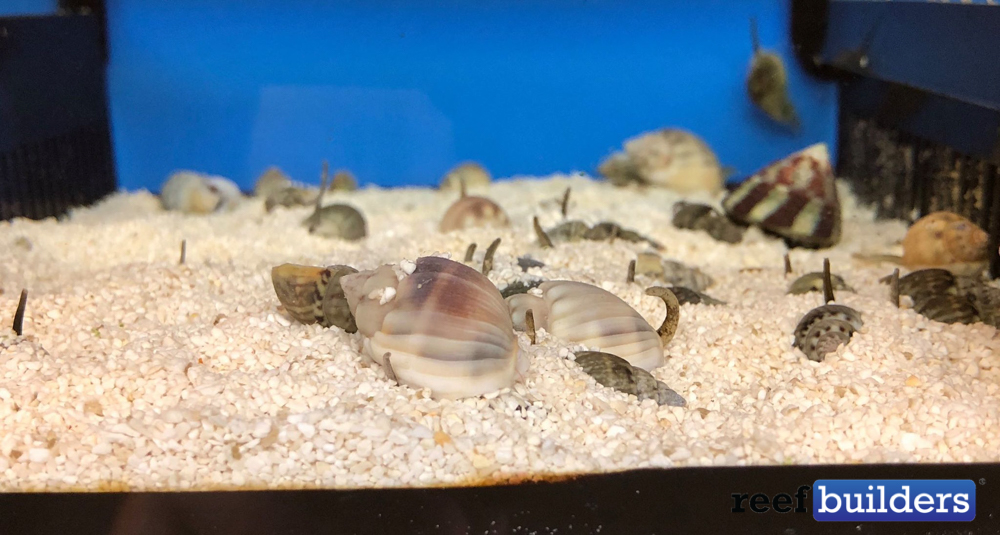
Fighting conch
Two other useful mollusks for keeping the substrate clean are two members of the conch family: the queen and the fighting conch. While both of these are available for the hobby in small sizes, the fighting conch is the better choice as it does not grow as large and is hardier than the queen conch. These animals are excellent sand sifters and will move a large amount of sand each day in their search for food. Of these, the fighting conch, which does not actually fight is the best choice as the queen conch can grow quite large. It provides the large conch shell frequently seen for sale at curio shops.
After the mollusks, the next best group of animals in cleanup crews are the echinoderms, especially sea urchins, starfish, and brittle stars. Urchins are great at consuming overgrowth of algae even turf algae. There are a variety of urchins that can be kept in reef tanks including the purple or black short-spined urchins, black long-spined urchins, red or blue tuxedo urchins, pencil urchins, and Halloween urchins. I have kept each of these varieties and have found that each is good for different types of algae problems, with the Halloween, black long-spine, and pencil urchins all being especially useful when a turf algae outbreak occurs.
I only keep these urchins during an outbreak as unfortunately due to their grazing nature and lack of vision they can wreak havoc in a reef tank by knocking down or off any coral colonies or frags that are not firmly mounted Once they have done their job of reducing an algae outbreak the cost of having them knock things down outweighs their benefit as one of the best algae eaters.
One thing that should be noted is that while they eat virtually every type of algae, they will not touch Bryopsis if it has grown too high and thick. If this has occurred, it is necessary to cut it back so that it is only a short field on the rock at which time the urchins will eat it.
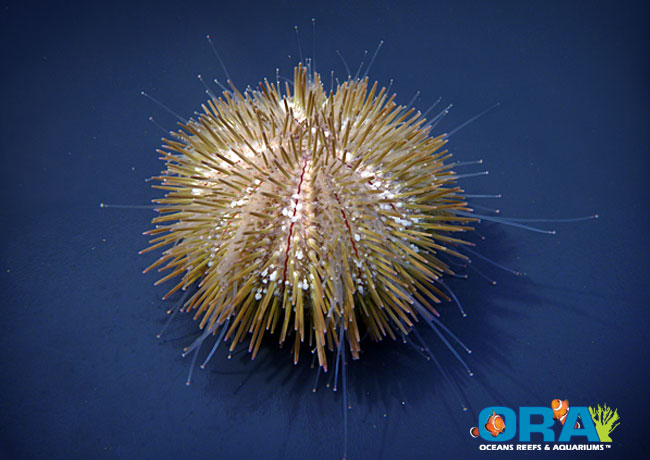
Detritivores
While urchins eat detritus as well as algae, a better group of detritivores for every reef tank are starfish and brittle stars. In my own tanks, sand-sifting stars are employed in all of my tanks containing substrate as they constantly turn it over consuming any type of food that comes into their path. They have done a great job of keeping the white sand in my tanks white as well as keeping any dead spots from forming.
In addition to these echinoderms brittle stars are also excellent detrivores. These hide in and under the rocks and only poke their prickly arms out when the tank is fed or when something they find edible passes their lair.
Like most echinoderms, they are most active at night and move quite quickly around the tank in their search for food. It should be noted that there have been some reports that when they get large they may attack and eat some small fish, I have seen them bother injured fish, so there may be some truth to this.
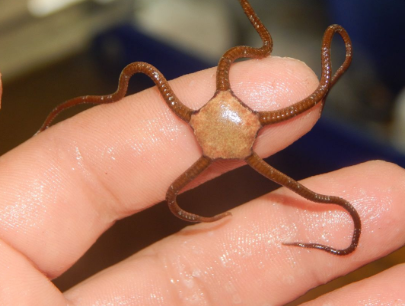
The last group of animals to be discussed as integral to any cleanup crew are the crabs. In this context hermit and mithrax crabs are the two types most frequently included. There are many types of hermits both small and large all of which are interesting and many of which are colorful. The types most frequently kept for this purpose are the blue-legged, scarlet, zebra, and dwarf red.
Like all crabs, hermits will eat just about anything so they will not only pick at algae, but also detritus, fish waste, and detritus. They are usually satisfied with this, but some may come to pick at corals if adequate food is not present so this needs to be kept in mind. This can be remedied, however, by simply feeding them directly. I have found hermits to be especially useful when tufts of soft algae start appearing.
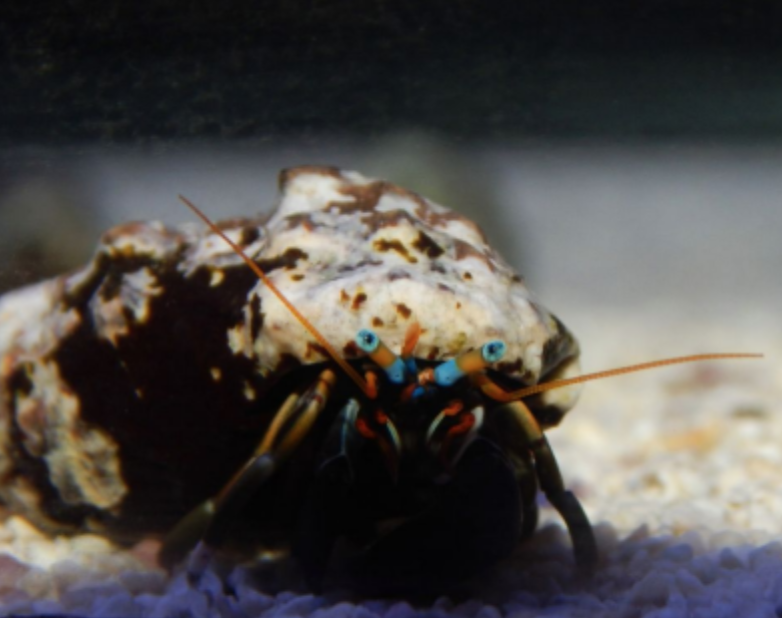
Different from them in appearance are the emerald green or ruby mithrax crabs. Unlike most crabs, these crabs have dull claws which are useful at scraping algae off of live rock. They are good at removing bubble algae (Valonia), as well as hair, Dictyota, and even Caulerpa. However as with the hermits, if enough food is present they have been reported to pick on corals.
All of the members of the clean-up crew are useful in one way or another but using them brings up some questions including what specifically will each animal do, how many need to be added and when should they be added? In my opinion, the best time to add them is when algae is first starting to take off. If they are added then, then hopefully they will keep the algae in check.
In terms of how many it all depends on how big the tank is, and how much algae is present. In my experience, I try to add a mix of at least a dozen animals for each fifty gallons of tank when the algae is starting to show or in a mature tank when there is a small outbreak. If this number does not control it then a second batch of half as many is added.
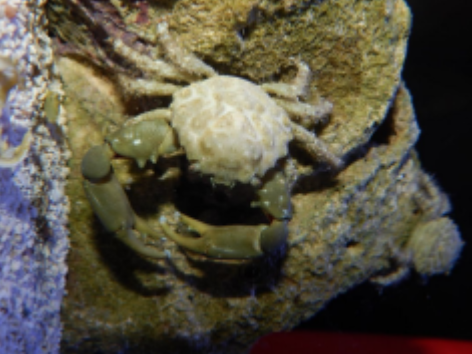
Avoid starvation
The goal is to keep the algae under control, but not to starve the crew. It is always easier to add more animals than it is to watch them starve to death. And while each animal prefers some type of food, most are generalists rather than specialists, so if some kind of food is present, they will usually do fine.
Cleanup crews are and have been an integral part of most successful reef tanks for at least the last two decades. Rather than using chemicals or some other unnatural means for controlling algae and other potential problems, using natural methods is the best choice in most instances.
Fortunately, animals to fit any sized tank and any budget to help in a tank are now widely available. However, in my opinion, employing them to fight algae is just part of the reason for keeping them. Over time their interesting behaviors and filling of a unique niche in the reef tank helps make a tank feel complete. So for these reasons, these animals should be included in every tank.


